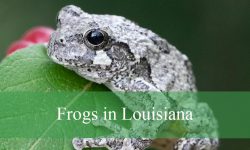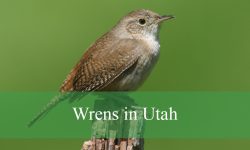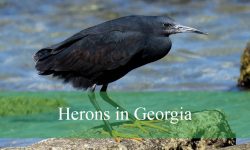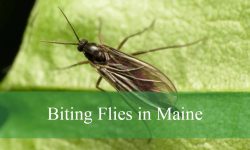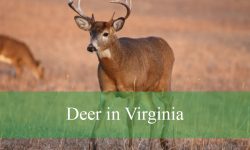Virginia offers a rich variety of natural environments, from coastal marshes and rolling farmland to forest edges and cityscapes. These diverse habitats support an impressive range of birds of prey. Among them, falcons are admired for their speed, precision, and bold hunting strategies. Though they are not as commonly seen as hawks or owls, falcons remain a highlight for those who take the time to watch the skies.
Six falcon species have been observed in Virginia. Each one brings a unique set of features, including differences in size, coloring, behavior, and migration patterns. The American Kestrel is a familiar sight in open fields, while the Peregrine Falcon has made a striking return to Virginia’s urban areas. Others, like the Gyrfalcon and Crested Caracara, are rarer but just as captivating when they appear.
This article provides detailed identification tips, behavioral insights, and seasonal information for each falcon species found in the state. By understanding their habits and knowing where to look, bird enthusiasts can improve their chances of encountering these swift and powerful predators in the wild.
Common Falcons Found in Virginia
American Kestrel
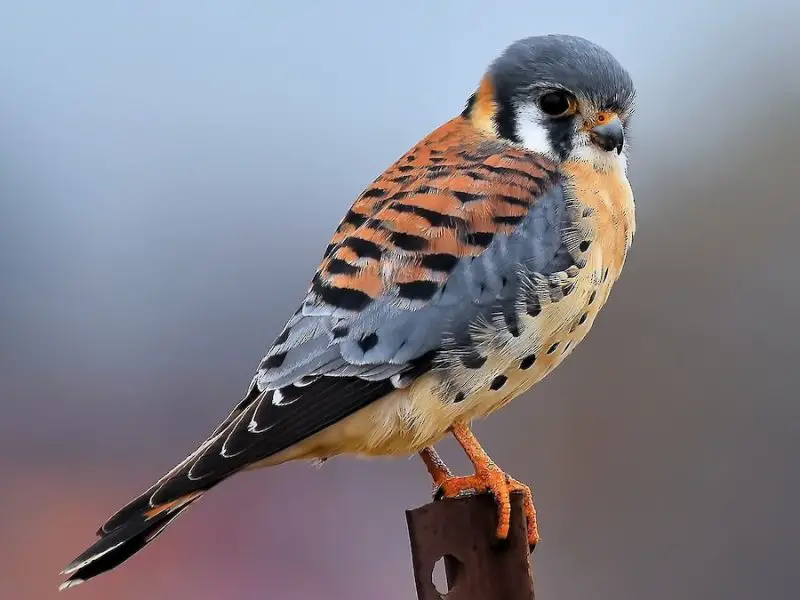
The American Kestrel (Falco sparverius) is the smallest falcon found in North America, including Virginia. Males and females differ in appearance—males exhibit slate-blue wings and a rusty back with black spots, while females are more uniformly brown with heavy streaking. Both sexes feature two distinct vertical black facial markings and a spotted belly. Adults typically measure 8–12 inches in length with a wingspan of 20–24 inches, weighing around 3–6 ounces. Despite their diminutive size, kestrels are fierce hunters and agile fliers.
Behaviorally, American Kestrels are known for their habit of hovering mid-air while scanning the ground for prey. They primarily hunt during the day, often perching on wires or fence posts before swooping down to catch insects, small mammals, reptiles, or birds. Their vocalizations are sharp and repetitive, often described as a high-pitched “klee-klee-klee,” especially during the breeding season. Males perform aerial displays to attract mates and defend territories.
In Virginia, American Kestrels are year-round residents, often nesting in open areas such as grasslands, meadows, and agricultural fields. They commonly use old woodpecker holes or man-made nest boxes for breeding. Females lay 3 to 7 eggs, which are incubated for about a month. After hatching, both parents feed the chicks, which fledge approximately 30 days later. These falcons are beneficial to farmers as they consume pests like grasshoppers and voles.
A fun fact about American Kestrels is their ability to see ultraviolet light, which helps them detect urine trails of rodents, making it easier to locate prey. Though their populations have declined in parts of North America, conservation efforts in Virginia—including the installation of nest boxes—are helping to stabilize their numbers.
Crested Caracara
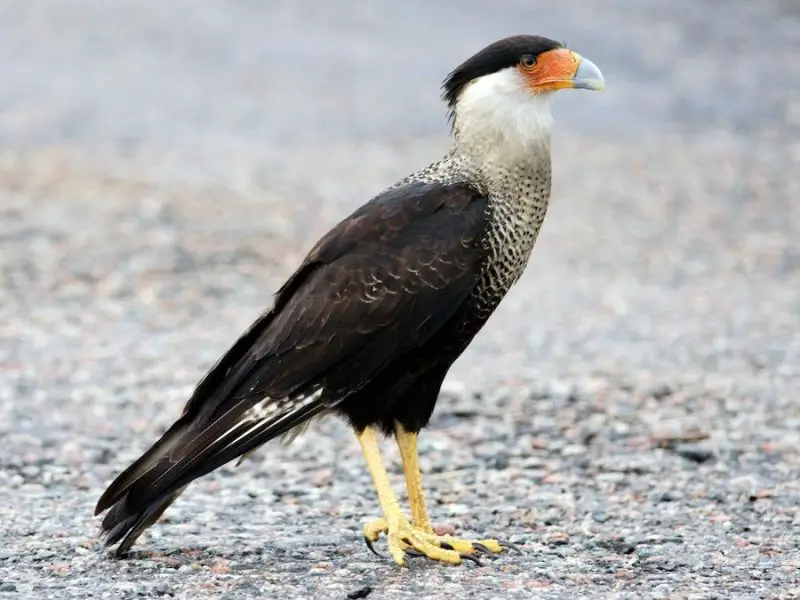
The Crested Caracara (Caracara cheriway) is an unusual falcon not commonly associated with Virginia, but it has been occasionally spotted as a vagrant. These large birds of prey are instantly recognizable by their striking appearance: a black body, white neck and head with a bold orange facial patch, and a prominent black cap. With a length of 19–23 inches and a wingspan of up to 50 inches, they are among the largest members of the falcon family.
Crested Caracaras are opportunistic and adaptable. Unlike most falcons, they often forage on the ground and are known to scavenge carrion, similar to vultures. They also hunt live prey such as reptiles, amphibians, insects, and small mammals. Caracaras are not particularly fast in flight, but they are intelligent, persistent hunters. Their call is a rattling “kr-r-r-r-r,” often heard during interactions or flight displays.
Though not native to Virginia, Caracaras may appear in open habitats such as coastal plains, fields, or marshlands, especially during unusual migratory events. They usually breed in open country further south, constructing large stick nests in trees or on elevated platforms. A typical clutch contains two to three eggs, and both parents participate in incubation and chick-rearing.
An interesting fact about Crested Caracaras is their symbolic role in Mexican folklore—they are one of the birds depicted in the national emblem of Mexico. Their scavenging behavior and unusual presence in Virginia make them a memorable sight for local birders.
Merlin
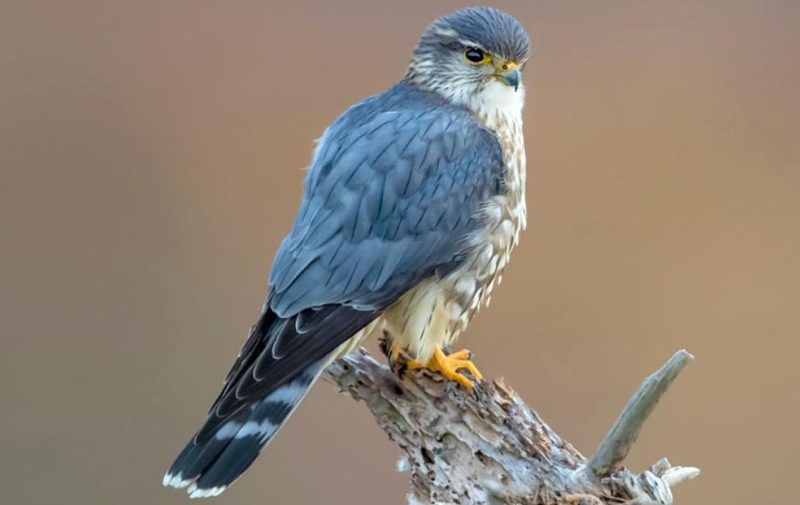
The Merlin (Falco columbarius) is a compact, powerful falcon found in Virginia primarily during migration and winter months. This bird is slightly larger than the American Kestrel, measuring 9–12 inches long with a wingspan of 21–26 inches. Males tend to be slate-gray with a streaked chest, while females and juveniles are brown with heavier streaking. Merlins have a distinctly fierce look, with a strong, hooked beak and bold eyes.
Unlike kestrels, Merlins are less vocal and more secretive. Their flight is fast and direct, with powerful wingbeats, making them excellent hunters of small birds, which they often pursue in mid-air. They also feed on insects and, occasionally, small mammals. Merlins don’t build their own nests, instead reusing old crow or hawk nests located in coniferous trees or on cliff edges.
In Virginia, Merlins are most often seen during fall and spring migrations, particularly along coastlines and open fields. Some individuals may overwinter in the state, especially in urban parks and suburban areas with abundant prey. Their courtship behavior is aerial, involving high-speed chases and acrobatic dives. The female lays 4 to 5 eggs, with incubation lasting about a month.
A notable fact about Merlins is their use by falconers throughout history, particularly during the Middle Ages, when they were known as the “lady’s hawk.” Despite their relatively small size, they are bold predators, capable of taking prey their own size in spectacular mid-air pursuits.
Gyrfalcon
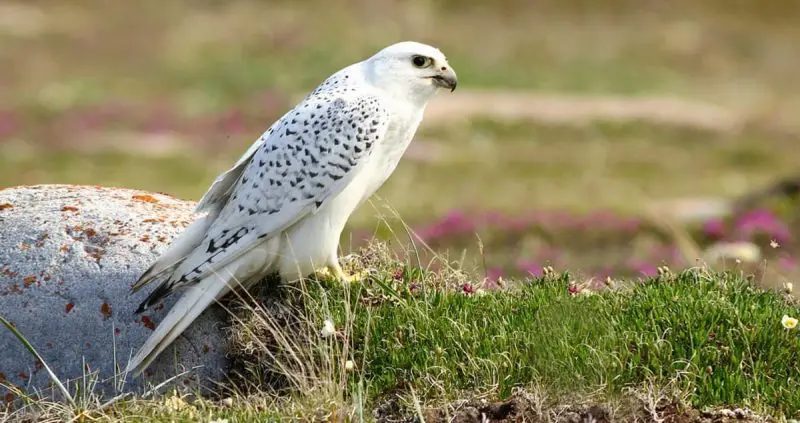
The Gyrfalcon (Falco rusticolus) is the largest and most powerful falcon species, rarely seen in Virginia, but possible during irruptive winters. This majestic bird can vary in color from nearly all white to dark gray or blackish, with barred or spotted patterns. Measuring 20–25 inches long with a wingspan of up to 64 inches, the Gyrfalcon dwarfs most other falcons and has a robust build ideal for cold climates.
Typically found in Arctic regions, Gyrfalcons migrate south irregularly, often in response to fluctuations in prey populations such as ptarmigans. They are silent and solitary birds, preferring wide open spaces where they can spot and chase prey in long, relentless pursuits. Unlike Peregrines, which stoop from great heights, Gyrfalcons rely on raw speed and endurance during level flight.
Though sightings in Virginia are extremely rare, birders may encounter them during harsh northern winters. They prefer open landscapes such as tundra, coastlines, and occasionally open farmlands or airports. They nest on cliffs, laying 2 to 5 eggs per clutch. Breeding occurs far north, but if they stray to Virginia, it’s typically outside of the nesting season.
One fascinating fact about Gyrfalcons is their long history with royalty. They were considered the most prized falcons in medieval Europe, often reserved for kings and emperors. Their appearance in Virginia is a rare treat for experienced birdwatchers, often causing a stir in the birding community.
Peregrine Falcon
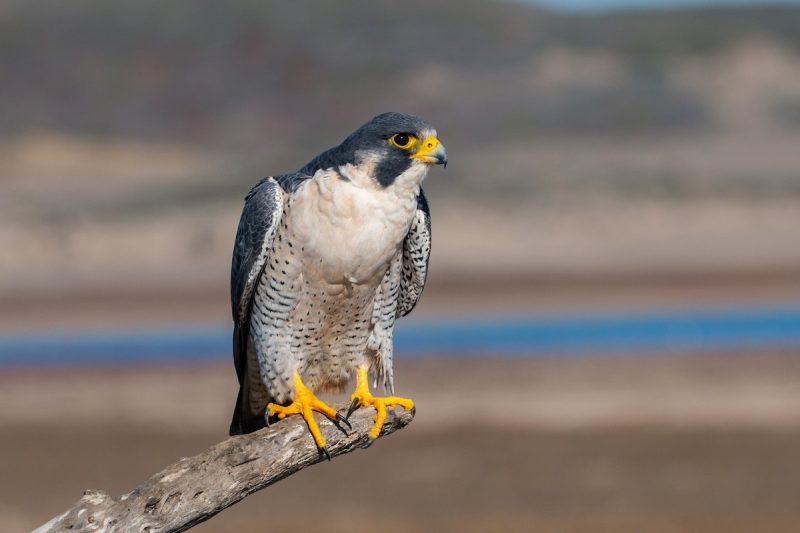
The Peregrine Falcon (Falco peregrinus) is a powerful and iconic bird of prey that has made a successful comeback in Virginia after being nearly wiped out by pesticide use in the 20th century. Adult Peregrines are characterized by their blue-gray back, barred white underparts, and distinct black “helmet” markings on the head. They typically measure 14–19 inches in length with a wingspan of 37–43 inches and weigh up to 3.5 pounds.
Known for their astonishing speed, Peregrine Falcons are the fastest animals on Earth, capable of diving at speeds exceeding 200 mph while hunting birds mid-flight. Their hunting strategy is a dramatic high-altitude stoop, followed by a precision strike with clenched talons. Peregrines mainly prey on medium-sized birds such as pigeons, shorebirds, and doves. Their call is a harsh “kak-kak-kak,” often heard near nesting sites.
In Virginia, Peregrines have adapted well to both natural cliffs and urban environments, nesting on bridges, skyscrapers, and ledges. Reintroduction programs have helped establish breeding pairs, especially along the coast and in major cities like Richmond and Norfolk. They lay 2 to 4 eggs, which hatch in just over a month. The young fledge after about 6 weeks and begin learning to hunt soon after.
A fun fact about Peregrine Falcons in Virginia is their use in monitoring environmental health. Because they are top predators, their presence indicates a healthy ecosystem. They have become urban celebrities in cities like Richmond, where webcam livestreams of nest sites draw thousands of viewers each spring.
Prairie Falcon
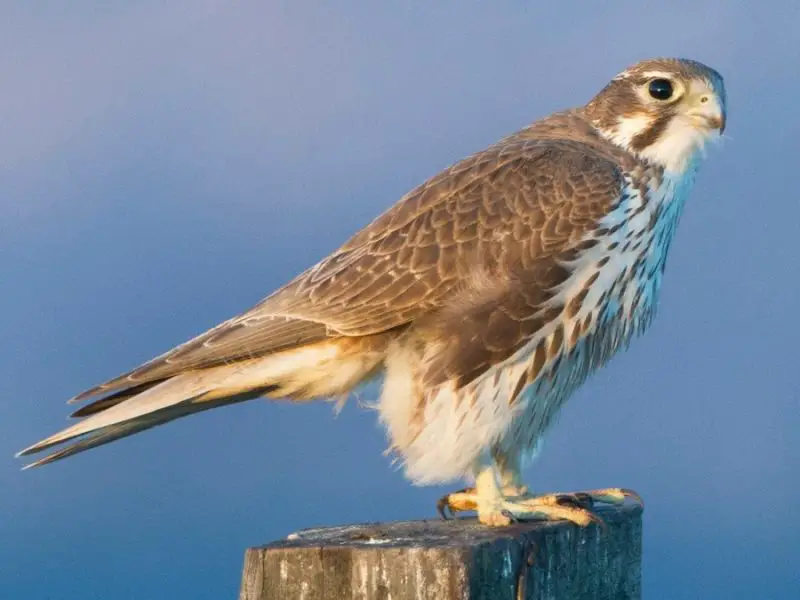
The Prairie Falcon (Falco mexicanus) is a medium-to-large falcon that occasionally appears in Virginia during migration or winter. Slightly smaller than the Peregrine Falcon, it measures 14–18 inches long with a wingspan of 35–44 inches. It is sandy brown on the back with a pale, streaked chest and a prominent dark patch in the “armpits” of the wings—useful for identification in flight.
Prairie Falcons are known for their swift, low-level hunting flights over open terrain. They primarily prey on small mammals and birds, often flying low to flush out prey before striking. Their vocalizations are loud and sharp, typically a rapid “kik-kik-kik.” Unlike many falcons, they are more solitary and territorial year-round.
While Prairie Falcons are native to the western United States, they are considered vagrants in Virginia and are rarely seen east of the Mississippi River. When they do occur in the state, they are usually found in wide-open habitats such as agricultural lands, airfields, or coastal dunes. They nest on cliffs, laying 3 to 5 eggs in shallow scrapes without any added material.
An intriguing fact about Prairie Falcons is their preference for arid, open spaces over forested areas. This adaptation helps them thrive in deserts and grasslands. Their rare appearances in Virginia are exciting for local birdwatchers, often requiring quick documentation before they vanish back to their native range.
FAQs About Falcons in Virginia
What types of falcons can be seen in Virginia?
Virginia is home to six falcon species: American Kestrel, Crested Caracara, Merlin, Gyrfalcon, Peregrine Falcon, and Prairie Falcon. Some are year-round residents, while others appear during migration or winter.
When is the best time to see falcons in Virginia?
Fall and spring migrations are the best times to observe falcons like Merlins and Peregrines. American Kestrels are often seen year-round, especially in open fields and farmland.
Do any falcons breed in Virginia?
Yes, American Kestrels and Peregrine Falcons breed in Virginia. Peregrines often nest on cliffs or city buildings, while kestrels use cavities in trees or nest boxes.
What do falcons eat in Virginia?
Falcons in Virginia feed on birds, insects, rodents, and reptiles. Their diet varies by species—American Kestrels prefer insects, while Peregrines hunt medium-sized birds in flight.
Are falcons protected in Virginia?
Yes, all falcon species in Virginia are protected under state and federal laws. Conservation efforts, especially for Peregrines and Kestrels, have helped stabilize their populations.

